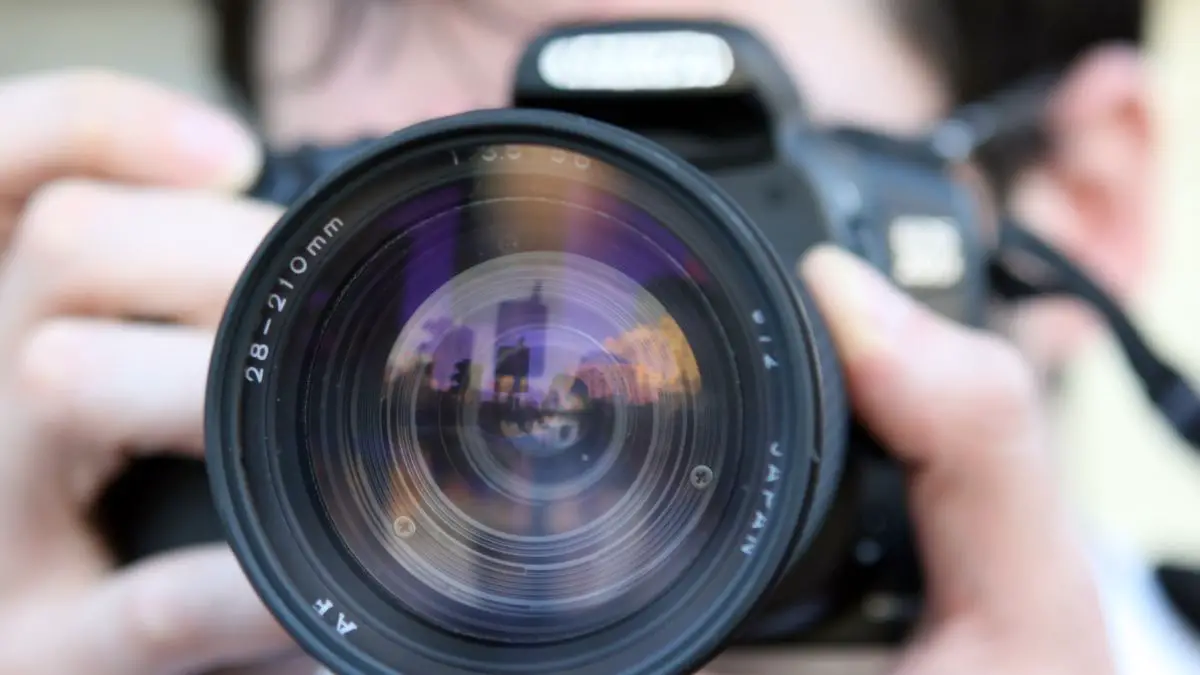Portrait photography is the ultimate medium for capturing a person’s essence. As a photographer, I have always been fascinated by the diverse range of techniques and styles that can be used to create stunning portraits.
In this article, I will take you on a journey through portrait photography, exploring the different types and their unique characteristics.
Traditional Portrait Photography
Traditional portrait photography is what most people envision when they think of a portrait. This classic style focuses on capturing the subject’s face, usually from the shoulders up. Traditional portrait photography aims to create a timeless image that highlights the subject’s features and expressions. This type of portrait often involves careful posing, controlled lighting, and a neutral background to keep the focus on the subject.
One key aspect of traditional portrait photography is the use of studio lighting. Photographers can create a flattering and well-balanced image by controlling the direction, intensity, and quality of light. Additionally, traditional portrait photography often involves directing the subject’s pose and expression to convey a desired mood or emotion. Traditional portrait photography is a versatile and widely recognized style, whether a formal headshot or a family portrait.
Environmental Portrait Photography
In contrast to traditional portrait photography, environmental portrait photography takes the subjects out of the studio and into their natural surroundings. This type of portrait aims to capture the subject’s personality and tell a story by incorporating elements from their environment. Environmental portrait photography provides a glimpse into the subject’s world, whether it’s a musician with their instrument or an artist in their studio.
To create compelling environmental portraits, a photographer must consider the location and how it relates to the subject. The background, lighting, and composition are crucial in conveying the desired message. Photographers can create visually captivating portraits that showcase both the subject and their surroundings by carefully selecting the environment and using techniques such as depth of field and framing.
Candid Portrait Photography
Candid portrait photography focuses on capturing spontaneous and unposed moments. It aims to capture the subject naturally and authentically, often without their knowledge or consent. This style of portrait photography is famous for street photography and photojournalism, as it allows photographers to capture genuine emotions and expressions.
The key to successful candid portrait photography is to blend in with the surroundings and observe without interfering. Patience is essential, as the perfect moment may arise when you least expect it. Candid portrait photography requires anticipating and reacting quickly to capture fleeting moments that tell a story. By embracing the element of surprise, photographers can create compelling and emotionally charged portraits.
Studio Portrait Photography
Studio portrait photography offers complete lighting, background, and composition control. This highly technical style allows photographers to create precisely lit and perfectly posed portraits. Studio portraits often have a clean, minimalist aesthetic, focusing solely on the subject.
To create stunning studio portraits, photographers must master the art of lighting. Using various lighting techniques, such as butterfly lighting, loop lighting, and Rembrandt lighting, they can sculpt the subject’s face and create depth and dimension. Additionally, the choice of background and props can further enhance the overall look and feel of the portrait. Studio portrait photography is ideal for capturing professional headshots, fashion editorials, and artistic portraits.

Lifestyle Portrait Photography
Lifestyle portrait photography aims to capture the subject in their everyday environment, engaging in their usual activities. It provides a more relaxed and casual approach to portraiture, focusing on capturing authentic moments and emotions. Lifestyle portraits often tell a story and glimpse the subject’s personality and lifestyle.
To create compelling lifestyle portraits, photographers must establish rapport with the subject and make them feel comfortable in front of the camera. The key is to capture genuine interactions and emotions rather than staged poses. Whether documenting a family’s morning routine or a chef in their kitchen, lifestyle portrait photography allows for a more intimate and personal portrayal of the subject.
Fine Art Portrait Photography
Fine art portrait photography is a genre that combines elements of portraiture and artistic expression. It goes beyond capturing a likeness and aims to evoke emotions and provoke thought. Fine art portraits often feature unconventional compositions, creative lighting, and unique post-processing techniques.
To create captivating fine art portraits, photographers must think outside the box and push the boundaries of traditional portraiture. Experimentation with lighting, composition, and editing is critical to creating a distinct and visually striking image. Fine art portrait photography allows for artistic interpretation and personal expression, making it a truly unique form of portraiture.
Fashion Portrait Photography
Fashion portrait photography is all about capturing the subject in a stylish and glamorous manner. It often involves collaboration with stylists, makeup artists, and designers to create a visually stunning image. Bold and dynamic poses, elaborate outfits, and attention to detail characterize fashion portraits.
To create striking fashion portraits, photographers must pay attention to every aspect of the image, from the model’s pose to the choice of clothing and accessories. The use of dramatic lighting and creative compositions further enhances the overall aesthetic. Fashion portrait photography requires a keen eye for fashion and a strong sense of style.
Conceptual Portrait Photography
Conceptual portrait photography is a genre that aims to convey a specific idea or concept through the image. It often involves using symbolism, props, and creative editing techniques to tell a story or evoke emotions. Conceptual portraits can be thought-provoking, surreal, or symbolic, allowing the viewer to interpret the image in their way.
To create impactful conceptual portraits, photographers must have a clear vision and a strong understanding of the concept they wish to convey. The choice of props, wardrobe, and location all play a crucial role in telling the story. Creative post-processing techniques can also be used to enhance the overall mood and atmosphere of the image.
Choosing the Right Type of Portrait Photography
With so many different types of portrait photography, deciding which one is right for your needs can be overwhelming. The key is to consider the purpose of the portrait and the message you want to convey. Traditional portrait photography is perfect for capturing timeless images, while environmental portrait photography provides a more contextual approach. Candid portrait photography is ideal for capturing spontaneous moments, while studio portrait photography offers complete control over the lighting and composition.
Lifestyle portrait photography provides a more relaxed and intimate portrayal, while fine art portrait photography allows for artistic expression. Fashion portrait photography is perfect for creating glamorous and stylish images, while conceptual portrait photography is ideal for conveying specific ideas or emotions. By understanding the characteristics of each type of portrait photography, you can choose the one that best suits your vision and objectives.
Tips for Capturing Stunning Portrait Photographs
Regardless of the type of portrait photography you choose, some specific tips and techniques can help you capture stunning images:
Establish a Connection: Building a rapport with your subject is essential for capturing genuine emotions and expressions. Take the time to get to know them and make them feel comfortable in front of the camera.
Experiment with Lighting: Lighting is one of the most important aspects of portrait photography. Whether using natural or artificial lighting, experiment with different techniques to create the desired mood and effect.
Pay Attention to Composition: Composition is crucial in creating visually appealing portraits. Consider the rule of thirds, leading lines, and framing to create a well-balanced and dynamic image.
Direct and Guide: When photographing people, providing direction and guidance is essential to achieve the desired poses and expressions. Communicate clearly with your subject and provide feedback throughout the shoot.
Capture Candid Moments: Even in posed portraits, capturing candid moments can add a sense of authenticity and emotion. Be ready to capture spontaneous expressions and interactions that tell a story.
Edit with Care: Post-processing can enhance your portraits’ overall look and feel. However, editing carefully and maintaining a natural and timeless aesthetic is essential. Avoid excessive retouching that may result in an unnatural appearance.
Incorporating these tips into your portrait photography workflow allows you to elevate your images and create stunning and memorable portraits.
Conclusion
Portrait photography is a versatile and captivating genre that allows photographers to capture the essence of a person. From traditional portraiture to conceptual art, the different types of portrait photography offer a range of approaches and styles. By understanding each kind’s characteristics and considering the portrait’s purpose, you can choose the one that best suits your vision and objectives. With the proper techniques and a creative eye, you can create stunning and memorable portrait photographs that stand the test of time.
So, go out there and explore the artistry of portrait photography. Unleash your creativity, experiment with different types, and capture the beauty and uniqueness of each individual. Whether you’re capturing a formal headshot, a candid street portrait, or a conceptual masterpiece, remember to embrace the artistry and create images that truly represent the subject’s essence.

